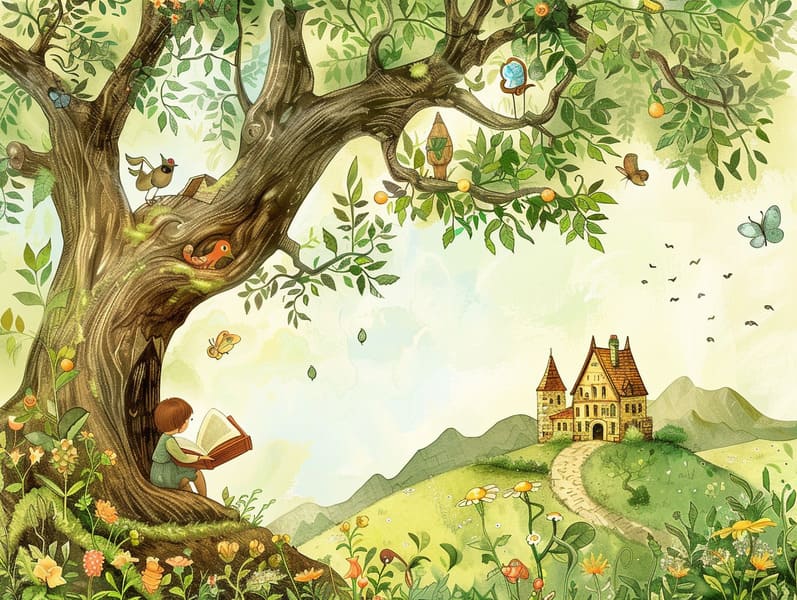The Rise of Famous Fairy Tales with the Endless Magic.
The Rise of Famous Fairy Tales with the Endless Magic.
Blog Article

Grimm's fairy tales have old origins. These tales have been whispered from one generation to the next far before they were ever written down. They came from a variety of traditions, including American traditions. They were initially told among older generations, often carrying themes and messages relevant to the societal norms and beliefs of the time.
The Brothers Grimm, Jacob and Wilhelm Grimm, were among the first to assemble many of these beloved narratives. Their published works, "Grimm's Story Collection," included classics like "Cinder Maid," "Hansel and Grethel," and "Snow-White and Rose-Red," which have since become staples in the world of children's fairy tales. Similarly, Hans Andersen's whimsical narratives, such as "The Story of the Little Mermaid," and "The Duckling that Could," have won hearts worldwide, guaranteeing their place in the pantheon of beloved fairy tales.
Despite being ancient, fairy tales remain as applicable as ever, especially as nighttime stories for kids. These whimsical stories are now available in different formats, including vividly illustrated books, charming animations, and digital fairy tales.
Their lasting presence can be traced to several delightful features:
Important Morals: Timeless fairy tales often present important moral lessons. Fairy tales like "The Boy Who Cried Wolf" teach the significance of honesty, while "The Story of the Tortoise and the Hare" point out the benefits of determination and humbleness. These stories offer young readers clear distinctions between virtue and vice, forming their moral compass in a kind yet lasting way.
Empathy and Awareness: Fairy tales frequently include protagonists facing obstacles and hardships, stimulating audiences to connect with their struggles and rally behind their triumphs. For instance, "The Tale of Beauty and the Beast" highlights the benefit of looking deeper to recognize the real character of a individual, promoting tenderness and knowledge.
Cultural Knowledge: Many old fairy tales are infused with the cultural contexts from which they bloomed. Immersing in these tales can provide illuminating insights into different societies, nurturing a sense of world respect and appreciation.
Inventiveness and Imagination: The mythical elements in ancient fairy tales—magic wands—generate children’s fantastical thinking. These tales move readers to magical realms, promoting creative ideas and a sense of awe that stays a lifetime.
Traditional fairy tales are not only magical but also educational. They serve as entrancing tools in developing various cognitive and emotional skills in little ones. When timeless fairy tales are spoken out loud, they boost language development by presenting new terms and intricate sentence structures. This practice also improves listening abilities and attentiveness, as little ones hang on every word, prepared to see what happens next.
Furthermore, deliberating the themes and characters of timeless fairy tales can nurture intellectual skills and cognitive skills. Children are educated to see patterns, forecast, and make sense of cause and effect. These analyses also advance little ones express their thoughts and feelings, strengthening their emotional intelligence.
In today’s digital era, the existence of digital fairy tales has made these tales more within reach than ever. Web-based platforms and mobile apps feature wide arrays of famous fairy tales that can be viewed or listened to anytime, anywhere. Fairy tales voiced are particularly liked, providing an entertaining method for young readers to be a part of these spellbinding stories. Read-aloud stories and read-aloud videos take characters and settings to life, often accompanied by enchanting music and harmonies that enhance the tale experience.
The timeless appeal of timeless fairy tales lies in their ability to adjust to modern society while maintaining their core messages. Contemporary updates of these fairy tales often showcase more multicultural protagonists and modern settings, making them accessible to today’s audience. However, the fundamental themes of bravery, benevolence, and integrity remain unchanged, continuing to reach listeners of all ages.
Classic fairy tales also offer a sense of assurance and familiarity. They present a neat narrative with a apparent beginning, middle, and end, often concluding with the finalization of conflicts and the triumph of justice over injustice. This predictability can be calming for little ones, allowing a sense of solidity in an inconstant world.
Classic fairy tales continue to entrance and coach new generations, maintaining their captivation and meaningfulness in modern society. As kids' bedtime tales, they put out a perfect blend of delight and instruction, facilitating moral values, empathy, and creativity. The presence of digital fairy tales and the sought after status of fairy tales spoken guarantee that these classic narratives remain attainable to new generations.
By maintaining and disseminating these stories, we continue to praise the rich tapestry of narrative artistry and cultural heritage. Whether you are viewing a beautifully illustrated book, accessing a virtual collection, or listening to an spoken story, the enchantment of classic fairy tales is always within reach. These narratives show us of the unfading presence of storytelling and its ability to connect us across time and space.
Whether you are exploring a artistically illustrated book, browsing a web collection, or hearing an read more voice book, the delight of classic fairy tales is always within reach.
These stories teach us of the timeless impact of stories and its ability to connect us across centuries and lands, making a tie that captivates and teaches alike.